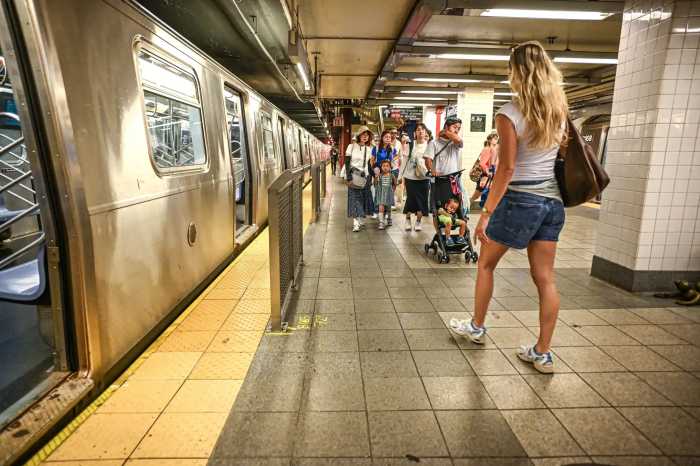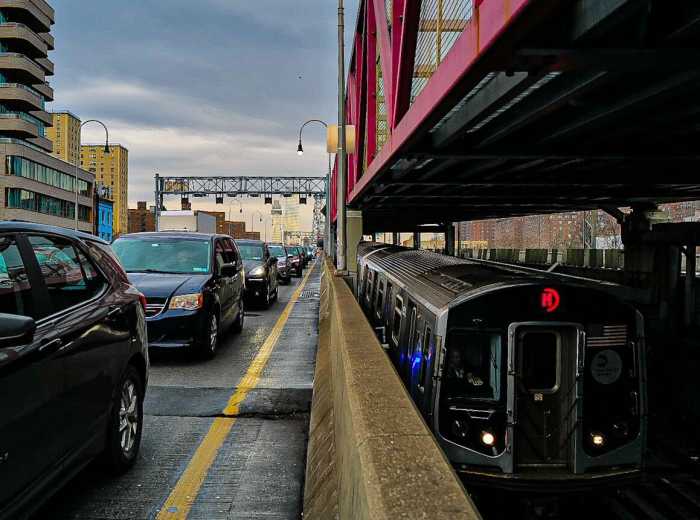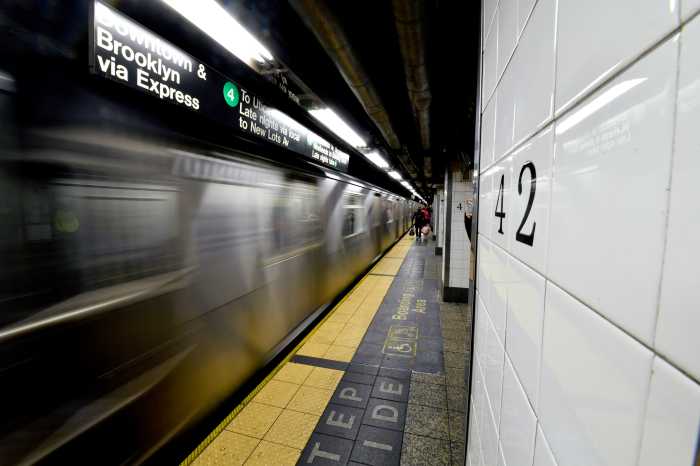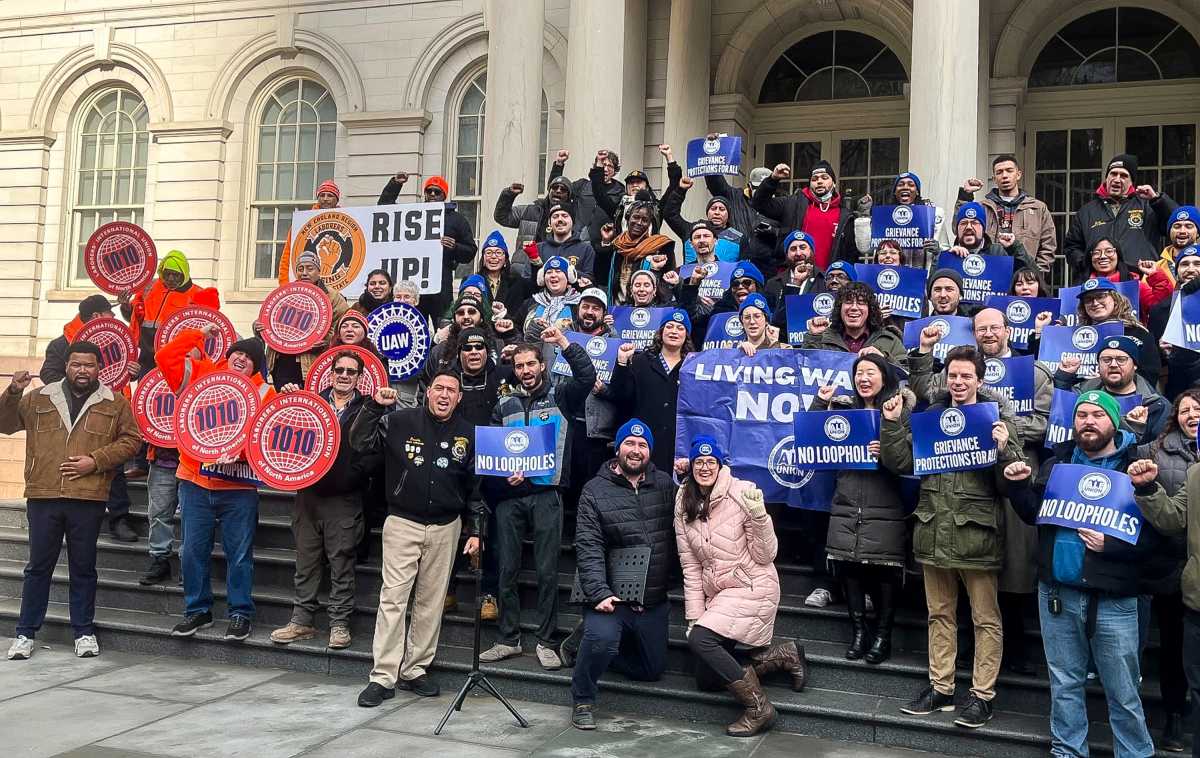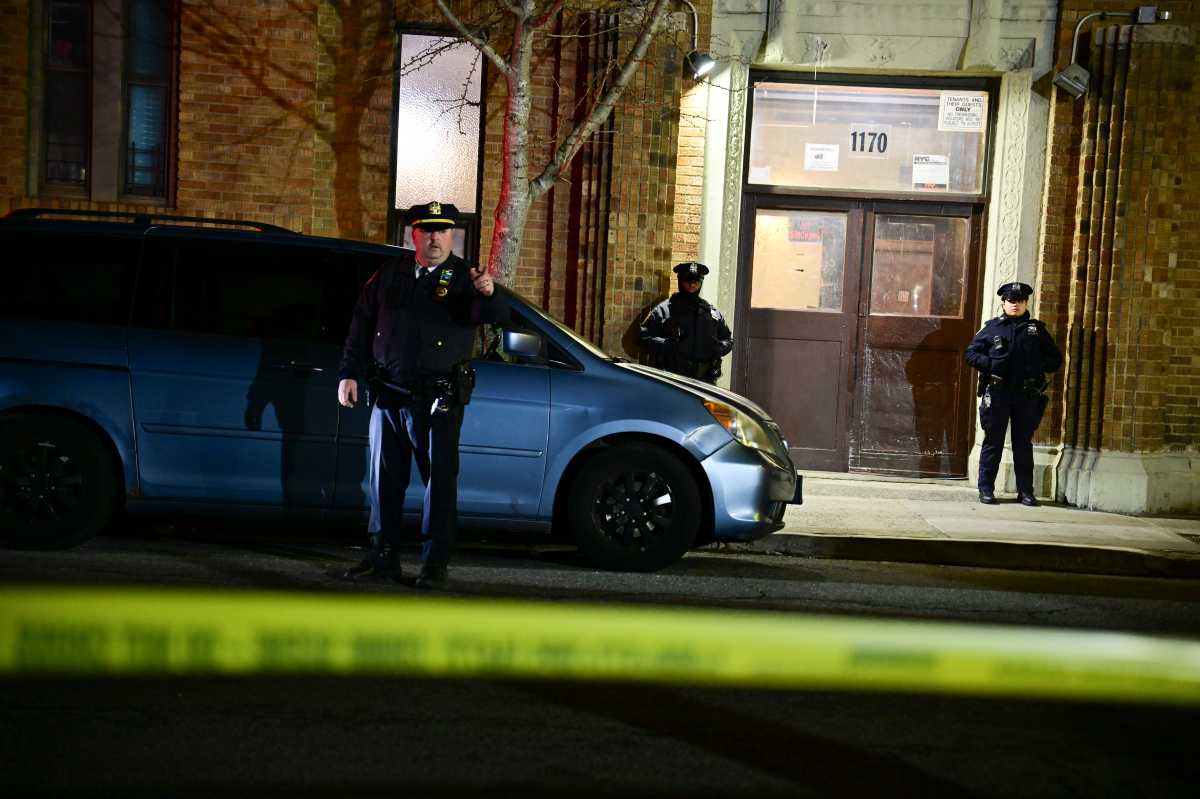Subway stations that are expected to absorb displaced L train riders during next year’s shutdown should get wheelchair-accessible upgrades, according to elected officials in Queens and Brooklyn.
In a letter penned to the MTA last week, Brooklyn Borough President Eric Adams and his Queens counterpart Melinda Katz charged that the authority is facing “both a moral and a legal failing” if it doesn’t bring several outer-borough stations up to Americans with Disabilities Act standards before L train service under the East River shutters in April 2019.
The officials are calling for ADA upgrades at the Court Square-23rd Street station of the 7, E, M and G lines in Queens. In Brooklyn, they’re requesting the same wheelchair access for the Broadway Junction station connecting the A, C, J, Z, M and L lines and Metropolitan Avenue/Lorimer Street station of the G and L lines. Each of these stations are expected to play a key role during the shutdown, when roughly 200,000 daily L riders will have to find new ways to get between Manhattan and Brooklyn.
The MTA plans to widen staircases or add new entry points to these three stations ahead of the shutdown without added elevators.
“L train riders who must use alternative lines for travel to and from Manhattan, and who require stair-free access, will face extraordinary hardships beyond the inconvenience all diverted riders will face,” they wrote. The letter was also signed by Brooklyn councilmen Antonio Reynoso and Rafael Espinal, TransitCenter executive director David Bragdon and United Spinal Association president and CEO James Weisman.
As part of the Canarsie tunnel work, the MTA will add elevators to both the Bedford Avenue and First Avenue stations — but officials and advocates say the authority is not going far enough. They charge that by altering access to the three key stations without adding elevators is a violation of the ADA and federal regulations, an argument at the heart of an ongoing lawsuit against the MTA.
“We appreciate that [New York City Transit] is installing ADA-compliant elevators at Bedford Avenue and 1st Avenue on the L line. But neglecting to make any other station accessible to people with disabilities in advance of the shutdown would be a missed opportunity to create a more accessible transit network and is a violation of federal law,” the letter, dated May 3, continued. “Even during an emergency shutdown, we cannot continue to neglect the travel needs of riders who are disabled.”
The MTA did not respond to a request for comment. The letter comes as the MTA faces a torrent of criticism for not doing enough to improve its historically inaccessible subway system, in which a quarter of its 472 stations are wheelchair accessible. Amid mounting pressure, the MTA board late last month passed a capital plan amendment to bring elevators to a total of 17 stations.
The funds will pay for the new elevators at Bedford and First Avenue, as well as elevator access to the G at Court Square — though the timeline for that project is not clear. Riders currently only have wheelchair access to the 7 line in that Queens station complex.
A small portion of L train riders are expected to forego the subways and use a network of local buses and shuttles — typically wheelchair-friendly vehicles — during the 15-month shutdown, according to MTA and city predictions. Though on the same day the letter was sent, Mayor Bill de Blasio signaled that the city would be limiting street priority for those buses to peak commuting hours only.



